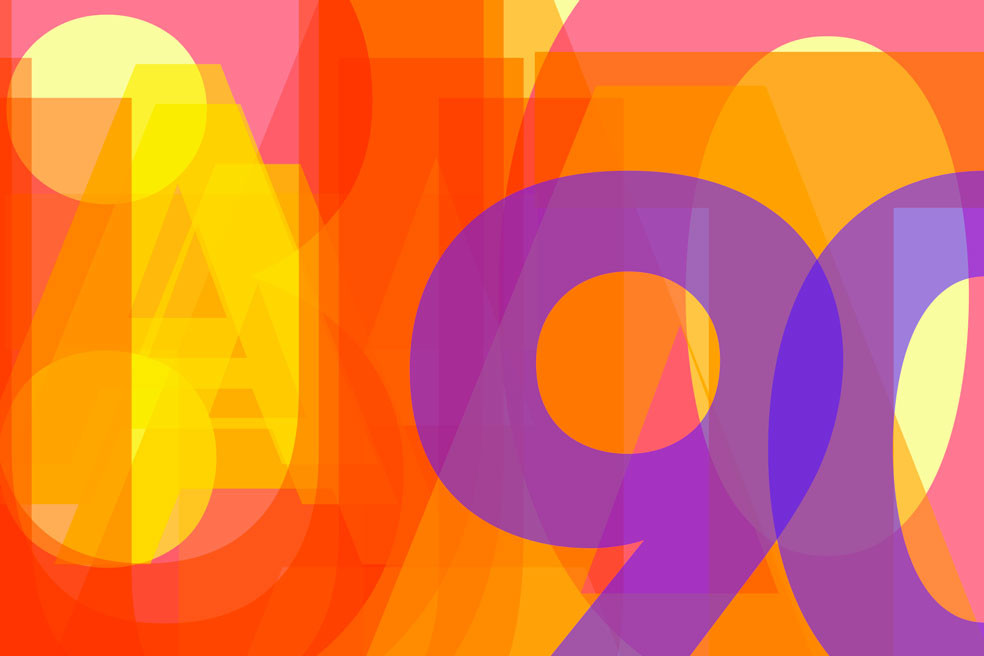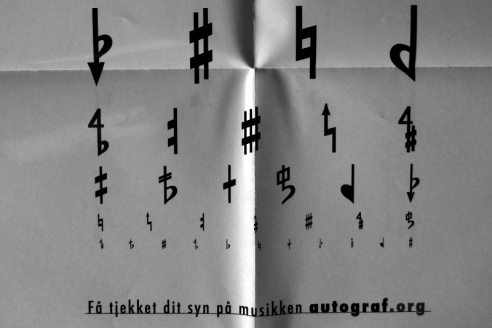
1986-96: Revitalised independence
Composer John Frandsen was head of AUT from 1985 until 1988, which was a time when the association sought to find its own identity. “I really don’t remember very much,” he says about his chairman years. “I believe I started at AUT prior to the Young Nordic Music Days Festival in Aarhus in 1986. As I recall, the AUT concerts and activities were primarily defined by an ambition to set them apart from Karl Aage Rasmussen’s NUMUS festivals. We wanted to vitalise AUT by scheduling the concerts at different times of the year than those of NUMUS, and in so doing generate a hype, try to get more attention.”
“We wanted to vitalise AUT by scheduling the concerts at different times of the year than NUMUS.”
Per Nørgård and Karl Aage Rasmussen’s composition class at The Royal Academy of Music in Aarhus (RAMA) was still however the pivotal point of all the activities. Concerts with the ‘usual suspects’ – such as the Elsinore Players, Da Camera choir and others – filled a substantial part of the programmes of that time, alongside international guests like the world-famous English soprano Jane Manning and her Jane’s Minstrels ensemble. Several of these events came into being as joint ventures where international stars, who were already hired to give master classes and workshops at RAMA, would also give an AUT concert.
According to Frandsen, one of the marked attempts at setting AUT apart from for example NUMUS was a series of church concerts in Skt. Markus Kirke . Here, new works by composers such as Andy Pape and Svend Hvidtfeldt Nielsen were presented. And this was music that proved church music could be more than traditional liturgical compositions and psalms. New art music for the church.
“Our music is future incarnate”
John Frandsen was succeeded by composer Niels Marthinsen who chaired AUT from 1989 until 1990. To Marthinsen, the sense of opposition towards the older generation and the more established music scene is his most vivid memory. “I really remember those meetings where our music took precedence over everything else,” he recalls of his time at AUT. “It was the future incarnate.”
”That was a time of paper and copy machines and telephones attached to the walls. That is all in the past now.”
The development of technology was significant to the artistic development of the association from 1986 until 1996, as it would continue to be the following decade. The world was changing rapidly and things that seemed revolutionary at the time, now, in hindsight, are less significant and radical. Or, as Niels Marthinsen puts it: ”That was a time of paper and copy machines and telephones attached to the walls. That is all in the past now.”
Niels Marthinsen’s chairman days were short-lived and perhaps a mere interlude in the great number of representative and administrative positions that characterized the composer’s activities in Aarhus over these years.
AUT in print
Composer Bo Gunge became chairman in 1991 and with his appointment a brand new era was ushered in. The magazine AUTograf appeared for the first time in 1992 and the association’s activities took on a more independent role. Aside from Gunge, the AUT board in these years consisted of several, very resourceful people, such as Jakob Schmidt and Lasse Laursen – people, who helped re-think the concert association and its activities. Collaborations with other institutions in the city – Aarhus University, Aarhus Art Academy and others – were reinforced and AUT really began to break free from its conservatory days.
The most innovative aspect of it all was without doubt the AUTograf magazine from 1992. The concert associations for new music – Det Unge Tonekunstnerselskab, Aarhus Unge Tonekunstnere, Fyns Unge Tonekunstnere and Nordjyllands Unge Tonekunstnere – had been joint publishers of Dansk Musik Tidsskrift (DMT) since 1925. There was a sense, though, that DMT was primarily concerned with international trends or activities that took place in the Copenhagen area. With a burgeoning music scene in the country’s second-largest city and Aarhus’ position as the capital of new music, an alternative to DMT seemed crucial.
The most innovative aspect of it all was without doubt the AUTograf magazine from 1992.
AUTograf was first issued as a members’ journal and contained descriptions of the forthcoming season’s concerts, general meeting reports and the like. Later on, it was more of a traditional magazine with composer profiles, debates and theme issues on for example music analysis and acoustic design. And in the end, AUTograf took on a full-blown artistic and conceptual character – a transformation that seemed to predict the magazine’s successor, Seismograf. Examples of the more artistic issues are no. 3:12, Stilhedens rum (Spaces of Silence), a text-less issue with photos of Danish composers’ studies, and no. 3:13, Manifest og synstestplakat (Manifest and Eye Test Poster), which was nothing but a blurred and halfway illegible manifest on one side and an eye test with musical notations on the other.
 The eye test poster in AUTograf no. 3:13.
The eye test poster in AUTograf no. 3:13.
Planetarium concerts and music competitions
Apart from the magazine, one of the important initiatives of this period was a series of concerts in the city’s new and significant spaces, particularly the concerts in the new planetarium at the Steno Museum. And perhaps most significant is Bo Gunge’s own composition, Månebryllupssange, performed in 1993 and later on, in 2001, the multi-media performance Stjernekoncert, which was composed for the trombone player Niels-Ole Bo Johansen and the Århus Sinfonietta. Both works continued to be part of the planetarium’s programme well into the millennium. If not as live performances, then as multichannel tape recordings.
The competition for live performance of contemporary music also deserves a mention – the Aarhus counterpart to DR P2’s chamber music competition. Young and hopeful soloists and ensembles with an interest in new music competed in live performances of new music. Several musicians even entered with first performances – compositions written specially for the event.
The ambitions were big, the initiatives were innovative and the groundwork was laid for the late 1990s.
